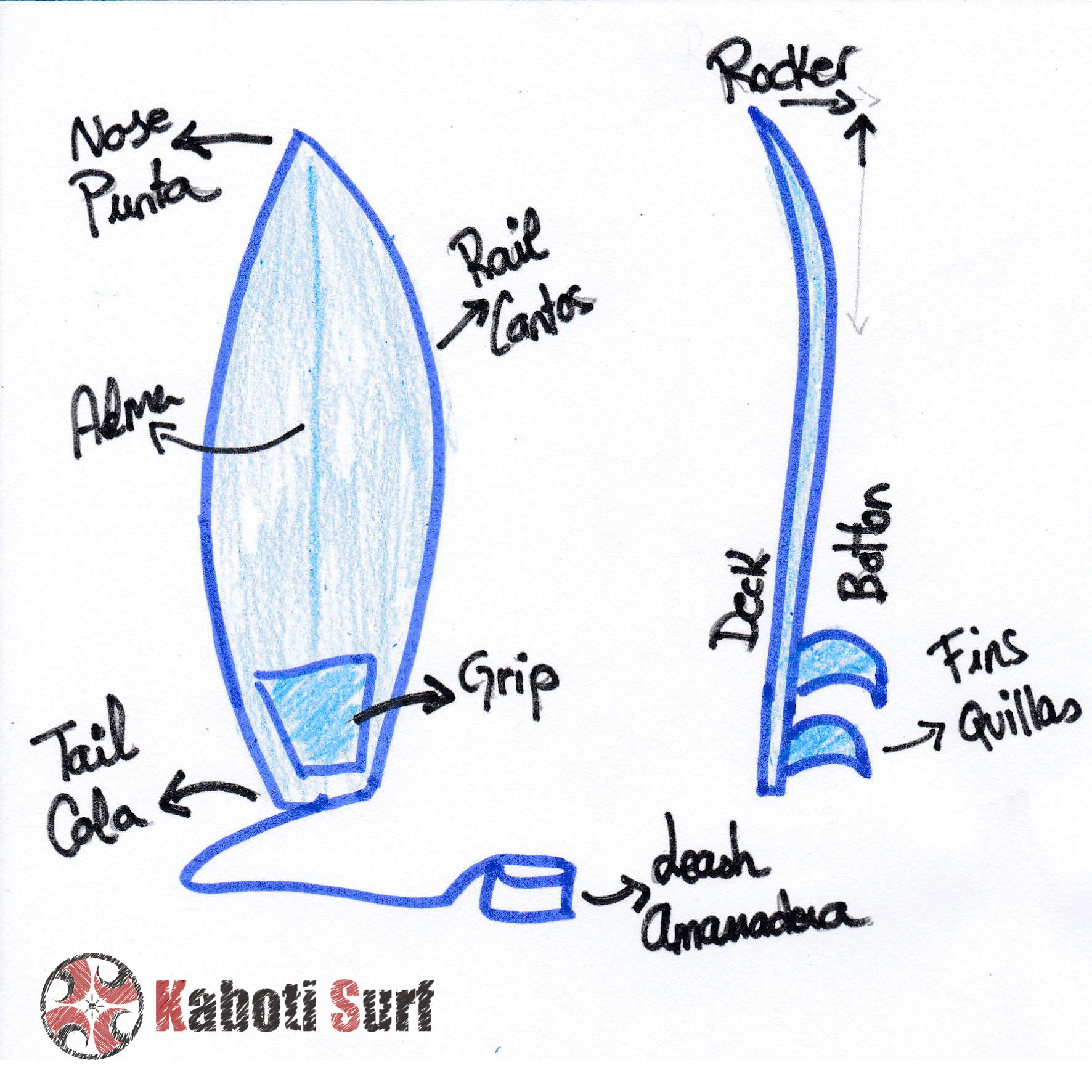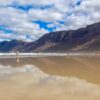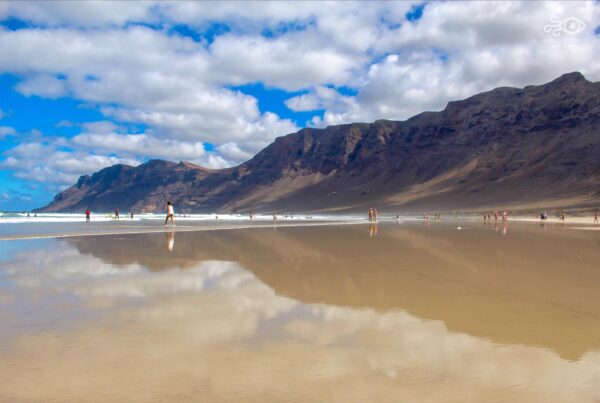Parts of the surfboard
Last week we wrote about the different types of surfboards out there. And it is also important to know the parts of the surfboard and how they are called to know exactly what they tell us when they name, souls, rockers, and tails.
First of all, you have to know that surfboards are measured by their height, width and thickness. This will help us to know the volume (liters) of our surfboard.
 Parts of a surfboard:
Parts of a surfboard:
Tail: The end of the surfboard, the back. The tail has a lot to do with surfing and maneuvering.
Simplifying it could be said that the narrower the grip on the wave you will have, and that a wide tail will help you to have more thrust in the wave, the wider the tail of a board, the more appropriate it will be for small waves. By having more surface in the back, we will achieve greater buoyancy and more ease in the row.
Depending on the shape, the tail can be:
• Square Tail: Currently it is not a very common type of tail. It is usually used in small waves. As an advantage we could say that it offers good maneuverability. By cons it is not stable.
Rounded or Squash: It is the most common design on short boards. She is very grateful for all kinds of conditions. Something that has made it one of the most popular queues on the market. Thanks to its shape it gives the surfer stability.
• Swallow or Fish-type tail: Especially used for small waves and with little force. Its biggest advantages are its acceleration power and its extra grip. At the same time it offers good maneuverability.
• Round Tail: It is used more for medium to large waves. It offers a good grip and at the same time allows smooth curves and wide turns.
• Diamond: The diamond-shaped tail allows the surfer to move with flow without losing speed.
• Pintail: This type of beak-shaped tail is used exclusively for large waves. Its shape allows an optimal grip on the wave. By cons loses maneuverability. This type of pintail glue is usually found in guns. This is what big wave boards are called.

Rocker: The rocker is the curvature of the board, from the tail to the tip. For those big wave boards the curvature of the board will be greater.
Tip (Nose): The front of the surfboard.
Bottom: The back surface of the board
Deck: The top surface of the surfboard.
Keels (fins): Keels are the fins of the board. They will give us stability, thrust and help us with our maneuvers.
Edge (rail): They are the edges of the board, in constant contact with the wave. They will provide us with the necessary grip as well as help us dissect the board in the water. Its shape varies from more rounded to sharper. Sharp edges will hold on to the wave making it more difficult to maneuver, but ideal for vertical walls.



